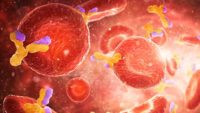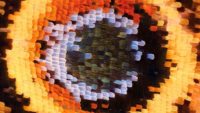What does this mean for big bang and biblical creation? …read more Source: creation.com
The valentine face of a barn owl is not just for decoration. It actually helps him find dinner. …read more Source: AIG Daily
By Harry F. Sanders, III An overview of carnivorous plants, differing mechanisms in plants, and whether carnivorous plants contradict the “very good” original creation in Genesis. …read more Source: AIG Daily
What does the Bible tell us about the age of the earth? Not only does the Bible describe how God created Earth and its life forms in six days, Genesis also contains detailed genealogies and chronologies. Based on the Hebrew Masoretic text, one can deduce Earth’s age to be about 6,000 years.1,2 In contrast, evolutionists believe Earth is 4.6 billion years old and that life here got going about 3.5 billion years ago. While the evolutionary story is just naturalistic speculation, the Bible gives a fairly complete history and timeline that provide the basis for what is often called [More]
By Heather Brinson Bruce Our bodies can do some pretty embarrassing things, and we can’t always stop them. …read more Source: AIG Daily
Has evolution affected Bible translation? …read more Source: creation.com
By Keoprommony Huy The immune system serves more than just to “defend” against disease – it was designed to interact with microbes and to cleanse the body. …read more Source: AIG Daily
By Dr. Danny R. Faulkner How Big Bang cosmology requires dark energy to work and how the reality of dark energy are now being called into question by mainstream scientists. …read more Source: AIG Daily
By Ken Ham God’s creation is amazing. Whether we look to the heavens at the massive scale of what he’s made or peer through microscopes to study atoms and molecules, we’re astounded by the complexity and design of his creation. And a new study on butterfly wings is no exception. Butterfly wings are made up of tiny scales. Don’t get your hopes up—I don’t know of any evolutionists saying they believed dinosaurs evolved into butterflies (not yet anyway)! At any rate, the scales are delicate structures, and the wings can quickly overheat or cool down too much—at least, they would [More]
By Ken Ham Sauropods—the “long-necked” dinosaurs—are among the largest and most famous of the dinosaur kinds. Naturally, scientists have assumed the massive creatures needed all four legs to support their enormous weight. Now a new study on three sets of front-leg-only sauropod tracks uncovered in Texas is challenging that assumption. But is there another way of looking at these trackways? The tracks appear to have been made by only the front two feet of sauropods three times in parallel. In this new study, the researchers conclude that, at certain times, the sauropods could move on their front feet, instead of [More]
There’s compelling evidence that the evolutionary concept of junk DNA has held back medical science for decades. …read more Source: creation.com
The Ancient Romans understood the correlation between natural sedimentary rock and man-made concrete …read more Source: creation.com
According to detailed biblical chronologies and genealogies, the global Flood recorded in Genesis that wiped out humanity occurred about 4,500 years ago.1,2 Then the earth was repopulated by Noah’s three sons and their three wives. As I reported a couple months ago, a research project was just published that used high quality DNA sequence data to develop a human Y-chromosome genetic clock that matches up perfectly with the … More… …read more Source: icr.org
Nuclear physicist Dr Heinz Lycklama explains the importance of biblical creation, the folly of radiometric dating, and the bankruptcy of goo-to-you evolution. …read more Source: creation.com
Why do volcanic tephra layers decrease in frequency down ice cores? …read more Source: creation.com
By Tim Lovett There’s a biblical ark that rode out the Flood, and it was no bathtub. Noah built it somehow, with or without some mysterious ancient technology. …read more Source: AIG Daily
How it is explained by the geological processes of Noah’s Flood. …read more Source: creation.com
By Keoprommony Huy How our immune system protects us from deadly pathogens and parasites through antibodies to demonstrate how we’re fearfully and wonderfully made. …read more Source: AIG Daily
By Ken Ham When you first learned about Neanderthals, you were probably told they were less-than-intelligent brutes who lived a primitive lifestyle a long time ago. I was told that when I went to high school and university. That’s how they’re still depicted in many museums, textbooks, and in the popular imagination. But that story simply doesn’t match with what we now know about Neanderthals. And that was confirmed yet again in a recent study of seashells. Scientists recently examined shells they associate with Neanderthals, discovered in a beachside cave in Italy back in 1949. These shells had been modified [More]
Pellets (or nodules) composed of various metals, such as manganese and iron, often litter the ocean floor. These nodules form when chemicals dissolved in seawater precipitate onto a small object lying on the ocean floor. Because these nodules are a potentially valuable natural resource, scientists are interested in discerning the factors that affect nodule growth rates. To that end, scientists have used computers and a method calle… More… …read more Source: icr.org
By Ken Ham Devastating wildfires have been burning throughout my home country of Australia for several months now. Firefighters and others have been working tirelessly, risking their lives, attempting to save people, homes, animals, and more from the fires. And one of the things they successfully saved was the only known grove of Wollemi pines—a species of tree I love talking about. Why? Well, this particular type of tree is believed by evolutionists to be older than the dinosaurs, according to secular dating. They were thought to have been extinct a long time. That is until 1994, when an officer [More]
Some evolutionists claim that the RubisCO enzyme is an evolutionary leftover, but when we look at the details it is obviously a design element! …read more Source: creation.com
A new analysis of a small pair of T. rex-like fossils, called Nanotyrannus, shows they were actually teenage T. rexes. Holly Woodward, from Oklahoma State University, and her colleagues reporting in Science Advances, counted the growth rings in the leg bones of the two Nanotyrannus specimens. Their results showed the specimens were not a new species. Rather, they were just 13 and 15-year… More… …read more Source: icr.org
By Dr. Danny R. Faulkner I will address the question of whether the universe really is as big as is often claimed. The short answer is, yes, the universe most certainly is that large. …read more Source: AIG Daily
Research associated with the Simos Foundation’s Collaboration of the Origins of Life offers a new answer to an old problem for getting a soup of chemicals to somehow turn into a living cell. Assuming that life arose spontaneously, how did the rarely available element phosphorus get concentrated into high enough amounts to supposedly incorporate itself into the many essential biochemicals that contain phosphorus? DNA a… More… …read more Source: icr.org
First there was dark matter, then came dark energy, then dark photons and now there is talk of dark stars, dark planets and even dark intelligent life, in a whole dark galaxy within our Milky Way galaxy. However, physicists actually know nothing about dark matter and dark energy. These terms and the nebulous concepts they represent were actually invented by astrophysicists because they assumed materialism (matter and energy is all there is). They then dogmatically insisted on rigorously applying this to the origin and structure of the universe. Read More
By Dr. Danny R. Faulkner A brief history of quantum mechanics from Newton to the “Theory of Everything” and what it means to Christians. …read more Source: AIG Daily









































